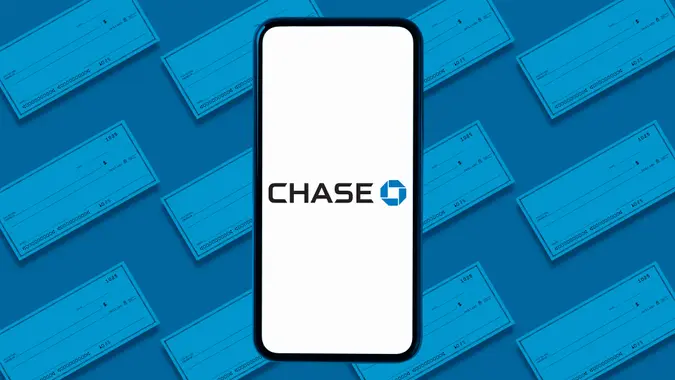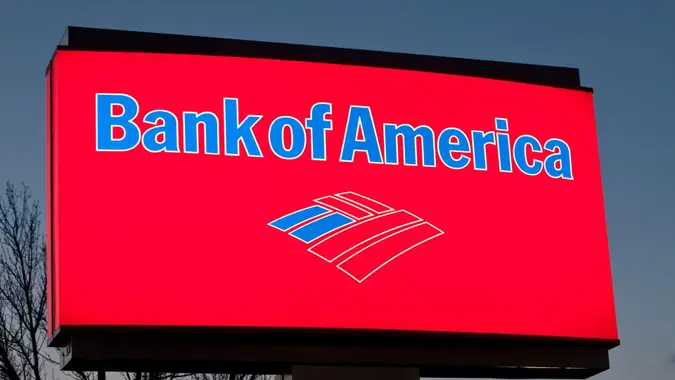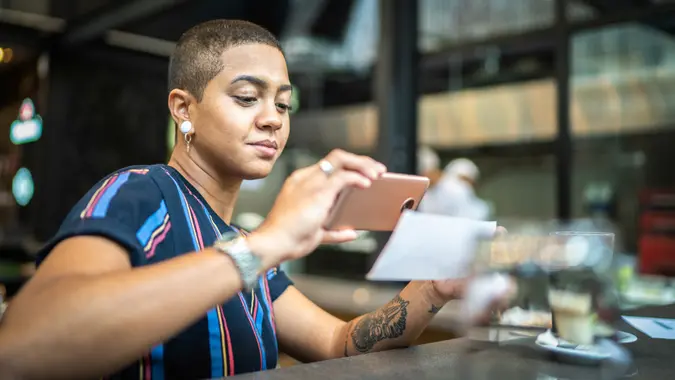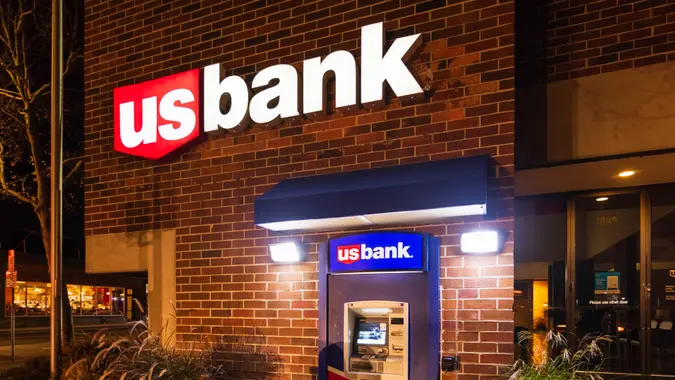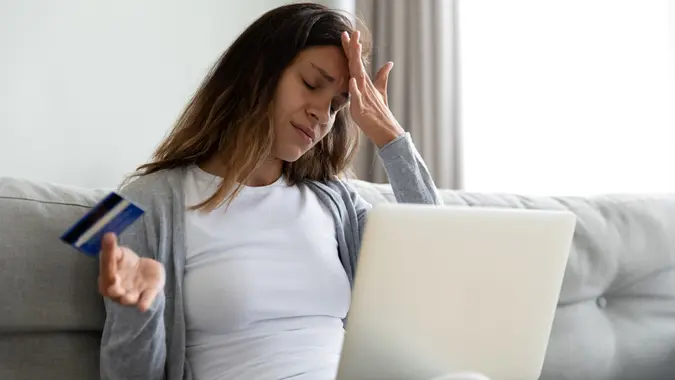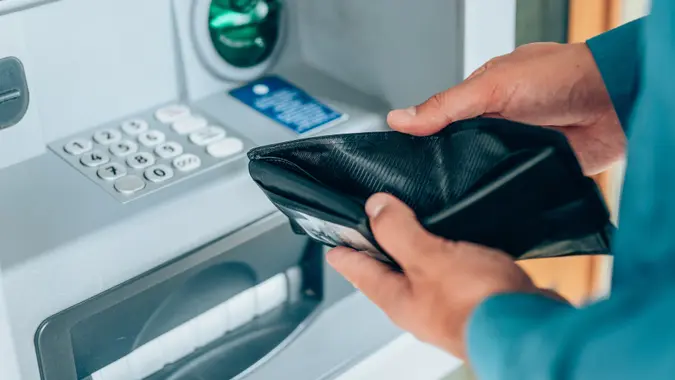How To Cash a Cashier’s Check: Your Step-by-Step Guide
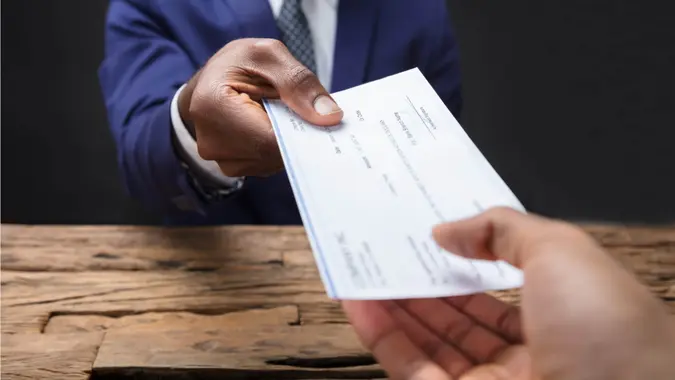
Commitment to Our Readers
GOBankingRates' editorial team is committed to bringing you unbiased reviews and information. We use data-driven methodologies to evaluate financial products and services - our reviews and ratings are not influenced by advertisers. You can read more about our editorial guidelines and our products and services review methodology.

20 Years
Helping You Live Richer

Reviewed
by Experts

Trusted by
Millions of Readers
Cashing or depositing a cashier’s check may seem daunting if you’re unfamiliar with the process. Cashier’s checks, known for their security and reliability, are a common tool in significant financial transactions. Whether it’s your first time handling a cashier’s check or you need a refresher, this guide breaks down step-by-step how to cash a cashier’s check.
Step-by-Step Process for Cashing or Depositing a Cashier’s Check
Whether you want to deposit or cash your check, you have to follow certain steps. Here’s what you can expect.
How To Cash a Cashier’s Check
Cashing a cashier’s check can be a simple process when you know the right steps to follow.
Step 1. Verify the Check Is Authentic
Before accepting the cashier’s check, make certain it isn’t counterfeit. You can call the issuing bank to verify if the funds are available. Once the check is verified, you can cash it.
Step 2. Choose the Place Where You Want To Cash a Check
The simplest way to cash a cashier’s check is to go to a bank or credit union where you have an account. Banks usually offer this service free to account holders.
If this isn’t an option, you can go to a retail store like Walmart or to a check-cashing location. You can also upload the cashier’s check using a debit card.
Step 3. Bring Proper Identification
You’ll need to provide identification, such as a driver’s license or passport, to verify your identity.
Step 4. Complete the Transaction
Before you can cash it, you must endorse the cashier’s check by signing the back of it.
How To Deposit a Cashier’s Check
Depositing a cashier’s check is similar to depositing any other type of check. Here are some steps you can follow:
Step 1. Visit Your Bank or Use Mobile Deposit
You can deposit the check by visiting your bank branch or using a mobile deposit feature if your bank offers it.
Step 2. Choose the Right Account
You can deposit a cashier’s check into a checking account or savings account. If you don’t have an account suitable for the deposit, consider opening an account that aligns with your financial needs.
Step 3. Fill Out a Deposit Slip
If depositing at a bank, you’ll need to fill out a deposit slip. If you need help doing so, let a bank representative know.
Step 4. Endorse the Check
Before depositing the check, endorse it by signing the back. Your signature authorizes the transaction.
Step 5. Keep Receipts and Track the Deposit
After depositing the check, make sure to keep the receipt for your records. It’s also wise to monitor your account to ensure the funds are properly credited. If using mobile deposit, follow any instructions provided by the app to confirm the deposit.
Fees for Processing a Cashier’s Check
Whether you want to deposit or cash your cashier’s check, you may face some fees.
- Issuing bank: Typically if you cash a cashier’s check at an issuing bank and you are also a bank customer, there is no fee. If you’re not a customer of the bank, there is a $5 to $10 fee or a percentage of the check amount.
- Non-issuing bank: Generally a bank will not cash a cashier’s check if you aren’t a customer, but in some cases, the bank will move forward with the transaction. In those cases, the fee is between $5 to $15.
- Check-cashing locations: The fees for cashing a cashier’s check at these locations are generally higher than banks and credit unions. The fee could be a percentage of the check amount, anywhere from 1% to 10%. Minimum fees start around $3 to $5.
- Retail stores: Most retail outlets will charge from $4 to $8 depending on the amount of the check.
- Prepaid debit cards: Prepaid debit cards may charge a loading fee that could range from $3 or more.
Funds Availability
You can expect the funds from a cashier’s check to be available for use the next business day. Some banks may make the funds available immediately.
If the cashier’s check is more than $5,000, the bank may put a hold on the portion of funds that exceeds this amount. The $5,000 is typically available the next business day.
Where To Cash a Cashier’s Check Without a Bank Account
The ideal place to cash your cashier’s check is at the issuing bank, but what if that isn’t an option? The good news is there are several places other than the issuing bank that will cash a cashier’s check. Call ahead to learn about check cashing policies and any special requirements and make certain you bring ID.
Check-Cashing Location
You have the option to go to a check-cashing location, like ACE Cash Express or any similar local check-cashing establishment. These places are typically open beyond bank hours for your convenience. Be aware there will be a fee, usually a percentage of the check, to cash your cashier’s check.
Retail Outlets
While you’re shopping for groceries, you can also cash your cashier’s check at places like Kroger or Walmart. Retail stores, which have extended hours, also charge a fee to cash your cashier’s check, but the amount is typically lower than a check-cashing place.
Prepaid Debit Cards
You have an option of also loading your cashier’s check to a prepaid debit card. You avoid having to handle lots of cash, and the funds are available electronically.
Endorse Your Check Over to Family or a Friend
If none of the above options work, you could ask a friend or family member to cash a cashier’s check on your behalf. Make sure you trust this person because you’re endorsing the check over to them.
Potential Issues and How to Address Them
Although cashier’s checks are a secure form of payment, sometimes you may encounter an expired cashier’s check or have insufficient ID. Let’s take a look at some scenarios and how you may want to address these scenarios.
Counterfeit Cashier’s Checks
Scammers may present counterfeit cashier’s checks that appear authentic but are fraudulent. Before accepting a cashier’s check, you can verify with the issuing bank whether the funds are available.
Expired Cashier’s Checks
If you wait too long, your cashier’s check could expire. Typically the expiration date is six months to a year from the issue date. However, some banks may still honor the check even if it has expired.
As soon as you receive the check, check the expiration policy. Make certain you cash the check within the timeframe. If your check does expire, some banks may still honor the check. The bank may also reissue the check as long as you return the stale-dated cashier’s check.
Insufficient Identification
The bank will typically ask for valid identification to cash your cashier’s check. Valid forms of ID include an unexpired driver’s license or passport. If you are unable to provide valid identification, you can endorse the check to a family member or friend you trust and they can cash the cashier’s check on your behalf.
FAQ
Here are the answers to some of the most frequently asked questions regarding cashier's checks.- Can a cashier's check bounce?
- It is highly unlikely for a cashier's check to bounce. Two scenarios where a cashier's check may "bounce" is if it is a counterfeit check or the bank has failed. However, FDIC insures funds in the case of a bank failure, so chances are the cashier's check will be honored.
- Are there limits on the amount you can cash with a cashier's check?
- There is technically no limit to the amount that you cash with a cashier's check. However, there may be bank policies that limit the ability to cash a large cashier's check. Sometimes large amounts of cash are unavailable. Some banks may impose stricter limits on the amount you can cash if you're a non-account holder at a bank.
- Do cashier's checks expire?
- Yes, a cashier's check can expire. However, some banks may still choose to cash a cashier's check if the funds are still available and the check looks legitimate.
Elizabeth Constantineau contributed to the reporting for this article.
 Written by
Written by  Edited by
Edited by 




